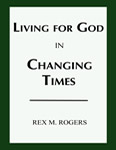- Details
- Written by Rex M. Rogers
A few years ago I set out to visit each of the 13 officially recognized United States presidential museums and libraries. I’ve written earlier about the first six museums I’ve visited. Now it’s time to update the list.
Lyndon Baines Johnson Library and Museum – LBJ’s museum is located on campus, University of Texas, Austin, a short walk from the Longhorns’ football stadium. The building is a “tall square,” white, and set within a large granite plaza dedicated to former First Lady, Lady Bird Johnson. Given the length of LBJ’s political career there’s a fair amount of memorabilia on display.
Like nearly all presidential museums a reproduction of the Oval Office is in the exhibit featuring original furnishings and the unique (developed for the president’s own tastes) oval rug. Unlike other museums, in this one you can sit in the office chair, which I did, and for a donation a nearby staff member will take your picture. Mine turned out pretty good.
Lady Bird was one of LBJ’s assets. First, there’s that memorable nickname. Then there’s her vision and accomplishment in beautifying America’s roadways. Finally there’s the fact she outlived him and was able to bolster LBJ’s reputation and legacy. The item in the museum I liked most was a hand-written letter from Lady Bird to LBJ expressing her confidence in his ability to lead in the wake of JFK’s assassination. It’s impressive. Mrs. Johnson’s office with a view of downtown Austin within the museum and library complex, which after LBJ’s passing she actually frequently used, is an added bonus, particularly seeing how she filed her completed work on the floor.
I did not emotionally bond with this museum, even though it reflected the times of my life. Main reason, I never emotionally bonded with the man when he was living. I didn’t share most of his politics and, like many, strongly disliked his micromanagement and misconduct of the Viet Nam War. In my estimation President Johnson and his advisors did not fight to win.
One profound issue position on which I did side with LBJ is racial reconciliation, which is to say the Civil Rights Act of 1964 and the Voting Rights Acts of 1965. The images in the museum of the Civil Rights Movement are as compelling as the Viet Nam War images are repelling.
George Bush Presidential Library and Museum – George H. W. Bush, “41” placed his large museum and library complex on the Texas A&M University campus in College Station, Texas. LBJ located his museum on the campus of the state’s most powerful university blocks from the Texas State Capitol and government district. Bush located his on the campus of the state’s premier military-related university...in the boonies.
Except for Texas A&M families, people won’t just “drop by on the way to somewhere.” They’ll have to make a special trip to see the museum. I understand Mr. Bush’s comfort zone with the military culture of the campus, but I think his museum will suffer for being where it is.
But it is a beautiful museum, features large and interesting presentations, including the story of Bush’s plane being shot down in WWII, his floating in the Pacific, and his rescue as yet a teenager, now a war hero—on film no less. The museum is large and it shares a lot about the Bush family over 3-4 generations.
Bush was known at one time as “Mr. Resume,” a cagey way of referring to his notable accomplishment of holding one key political appointment after another—Congressman, US Ambassador to UN, Republican Party National Committee Chairman, Chief Liaison of US to China, Director of CIA, Vice President, President. All of these experiences are accessible in the museum, and outside there’s a large running horses sculpture that fits south central Texas. I enjoyed the museum, just not its location.
John F. Kennedy Presidential Library and Museum – The Kennedy Museum and Library, which JFK never saw, is attractively located in Boston, Massachusetts on a point of land at the edge of the University of Massachusetts campus bordering on the bay on two sides.
Aside from the view of the water I found JFK’s museum disappointing. It’s not as dated in its look as the Eisenhower Museum, but it’s close. It needs a renovation, and more than that, it should display far more memorabilia, video, and other remembrances. For the impact former First Lady Jacqueline Kennedy made, for example, there is relatively little about her in the museum—the requisite family pics and two gowns, but that’s about it. For as stylish as she was you’d think there’d be several gowns, etc.
The best presentation dealt with the Cuban Missile Crisis of October 1962. But oddly absent, or at least I didn’t see it, is any in-depth consideration of the failed Bay of Pigs invasion of April 1961.
The events surrounding the assassination are portrayed in a short hallway on about 10-inch black and white monitors. That’s it. I understand why the Kennedy family may not want to feature that horrible day and its aftermath in November 1963. But this incredible story is summarized in a couple of TV tapes and Walter Cronkite’s announcements. Nothing more.
I didn’t bond with this president. Not much about his politics, nor his lifestyle fit, in my universe. But I was in 6th Grade when he was killed and like most Americans I can remember where I was when I heard the news—on the playground. And days later I was watching when Jack Ruby shot and killed Lee Harvey Oswald on live national television. For the significance of these events, for the incredible number of books that have been written about Camelot and its untimely end, for these events’ continuing importance, they could occupy a huge room, not a small exit hallway. These events literally changed our nation and in my estimation demand considerably more than the JFK Museum is presenting.
The George W. Bush Presidential Center is yet in development in Dallas at Southern Methodist University, former First Lady Laura Bush’s alma mater. Of course a Barack Obama Presidential Library and Museum will not be built for President Obama until he finishes his presidency.
Aside from these contemporaries, I have Hoover, FDR, and Clinton yet to go.
© Rex M. Rogers – All Rights Reserved, 2012
*This blog may be reproduced in whole or in part with a full attribution statement. Contact Rex or read more commentary on current issues and events at www.rexmrogers.com or follow him at www.twitter.com/RexMRogers.
- Details
- Written by Rex M. Rogers
Gambling continues to grow, though it slowed a bit during the last recession. More women are gambling, and some say they like slot machines because it's one of the few things they can do where they don't have to deal with men.
But the growth of gambling is not good news. It's not an answer to our economic problems, and it is not a harmless game. Gambling is still threatening, economically for sure, socially or personally too. Gambling does not produce anything and contributes nothing of redeeming social value to our culture. And there's no such thing as luck.
Here are a few more thoughts on what's happening with gambling, a bad bet no matter how you cut the deck:
© Rex M. Rogers – All Rights Reserved, 2012
This blog may be reproduced in whole or in part with a full attribution statement. Contact Rex or read more commentary on current issues and events at www.rexmrogers.com or follow him at www.twitter.com/RexMRogers.
- Details
- Written by Rex M. Rogers
What is it, really, that distinguishes a good from a not-so-good sermon? Is it the condition of our own heart or our personal taste? Or is it something independent from us within the sermon itself? And I recognize that a sermon one might not like can be used of God in a powerful way, if not in our lives than in the lives of someone else. But aren’t there some qualitative differences identifiable, one sermon to the next?
There’s another major consideration I haven’t addressed before: the speaker’s personality and/or personal gifts. It seems logical to me that we’ll rank a sermon higher on our scale of rhetorical and spiritual beauty if we like the person delivering the message. And/or we’re likely to rank a sermon higher if the person sharing the message is a gifted speaker, talented platform presence, and/or polished presenter (“performer”?).
But our heart matters and preferences, the speaker and his or her persona aside, it still seems to me there are a few things we could list that distinguish the good from the not-so-good sermon.
Here’s my list:
--Are we listening to something new, or is this the “same sermon, different text”? In other words, while the speaker is delving into a different passage of Scripture is he pretty much giving you another summary of what he’s said numerous times before? Repetition per se is not a bad thing. In fact, it’s a tool of good pedagogy. But then again, if you’re hearing the same themes over and over it’s likely a sign the speaker hasn’t or isn’t studying new material.
--Is the sermon just a recitation of the same themes: be a good boy or girl, don’t do bad things? Now is this wrong or injurious counsel? Of course not, but if the speaker has presented basically this same refrain ad infinitum, than you’re not going deeper and you’re not likely maturing in the faith.
--Sermons focusing upon personal-behavior-only can fairly be described as pietism. Much of this approach isn’t hurtful in itself; in fact it’s good. But if this is where the sermon stops than the speaker is missing an opportunity to teach a Christian worldview, to integrate Scripture in contemporary life and culture, to demonstrate how Scripture not only enriches and blesses our inner faith and personal life but also offers enormous positive reinforcements for our culture—“way of life”—whether social, political, economic, civic, artistic, and more.
--Is the sermon simply an elaboration of a Scripture passage? We have to be careful here. The Word of God, simply read, is in itself a great sermon. God promises his Word will not return to him empty or without impact. What I’m noting, though, are the times a speaker reads a passage of Scripture than simply works back through it telling you what it means. Again, this isn’t a “bad thing” in itself. Perhaps this method is needed to assure understanding. But I think far too many commonly presented passages are repeatedly presented, talked about, and that’s it. Something’s missing.
--Does the sermon lack illustrations? This is what’s often missing in the previous scenario: a lot of Scripture but no illustration from contemporary life painting a picture of what the passage means and how it might change your life. I’m amazed how often I hear sermons that make no connection to life, to news, to what’s going on in the world outside the church.
--Similarly, does the sermon lack application? It’s one thing to read the Word and understand what it says. It’s another thing to be able to apply it in your life. I think I’ve met young people who can tell you the story of Daniel in the Lions’ Den but have no idea what the story means for them in 2012. They can talk about miracles but someone missed the opportunity to teach them about the sovereignty of God. Here again is the opportunity to get outside the church—apply doctrine in a real world.
Well, this is enough. I think a good-to-great sermon rightly divides the Word of Truth, illustrates it, and draws upon a Christian worldview to apply it to or “integrate” it in both our personal lives and culture.
© Rex M. Rogers – All Rights Reserved, 2012
*This blog may be reproduced in whole or in part with a full attributionstatement. Contact Rex or read more commentary on current issuesand events a www.rexmrogers.com or follow him at www.twitter.com/RexMRogers.
- Details
- Written by Rex M. Rogers
What’s the difference in a good and not-so-good sermon? Is it us, you, me? Is it our own hearts and attitudes more than the details, construction, or delivery of the message? Perhaps, but for now I’ll leave that thought for another day. I’ve been thinking about “What makes a good sermon?”
Have you ever listened to a sermon and thought it was one of the best, most moving you’d ever heard? Or maybe you heard a sermon that you thought was a masterpiece, constructed in a way that hit a spiritual and maybe an oratorical home run?
On the flip side, ever listened to a sermon and wondered what the speaker was trying to say? What was his point anyway? After awhile, do you even care? Or have your ever listened to a sermon and wondered what the speaker was thinking when he put it together?
Now I’m not a theologian or a preacher. I’ve not attended seminary and I’m not ordained. So maybe I’m not one to address the question “What makes a good sermon?” On the other hand, I’ve listened to thousands of sermons and I am a speaker, having presented a few hundreds of sermons along the way—hopefully a few good ones and undoubtedly more than a few not-so-good ones.
But before I dive in, I must acknowledge two other considerations that get in the way of an unbiased evaluation of sermon quality. It’s possible that, along with the heart matters I mentioned earlier, determining what makes a good sermon is a matter of taste or preference. Like everything else, I suppose there are some things about a sermon that makes it likeable and appreciated by one but not another listener. If this is so, than what I’m going to say suggests more about my preferences than about the independent merits of a given sermon.
Finally, there’s the possibility that the whole question of the “likeability” of a sermon might be the wrong question. Certainly it’s possible, in fact I think I’ve experienced it, that a perceived "un-liked" sermon can indeed be a needed, convicting, and beneficial one in the providence and work of the Holy Spirit.
So with all that, heart matters, taste, and the spiritual potential of “un-liked” sermons, it seems like I’ve talked myself into a corner that admits to no criteria for identifying a good from a not-so-good sermon. But still, I don’t think so. What do you think?
© Rex M. Rogers – All Rights Reserved, 2012
*This blog may be reproduced in whole or in part with a full attribution statement. Contact Rex or read more commentary on current issues and events at www.rexmrogers.com or follow him at www.twitter.com/RexMRogers.
- Details
- Written by Rex M. Rogers
A few years ago I wrote a book on gambling--not pro but con. I'm against gambling in all its forms. I thought then and still think now that gambling is an ingenious way to bilk people out of their money. Just design a game in which people give you money to play. There you have it. Pay to play and pay you do if you gamble very much.
My book is entitled "Gambling: Don't Bet On It" and it's still available in print in a revised edition. I wrote the book mostly in 1996 just before the Internet became publicly available. By the time I revised the book in 2005 I had to add an entire chapter on Internet Gambling. Such is our dubious progress.
Here're a few more thoughts on this most postmodern, i.e., irrational, pursuit:
© Rex M. Rogers – All Rights Reserved, 2012
This blog may be reproduced in whole or in part with a full attribution statement. Contact Rex or read more commentary on current issues and events at www.rexmrogers.com or follow him at www.twitter.com/RexMRogers.
- Details
- Written by Rex M. Rogers
Americans, if not Westerners in general, view the Middle East and North Africa through what I call "filters." We see through a lens darkly. But then again, Middle Easterners and in this case specifically Arabs also hold a set of misconceptions about Americans that affect their view of who we are and what we are about.
Here are a few things to consider:
© Rex M. Rogers – All Rights Reserved, 2012
This blog may be reproduced in whole or in part with a full attribution statement. Contact Rex or read more commentary on current issues and events at www.rexmrogers.com or follow him at www.twitter.com/RexMRogers.


